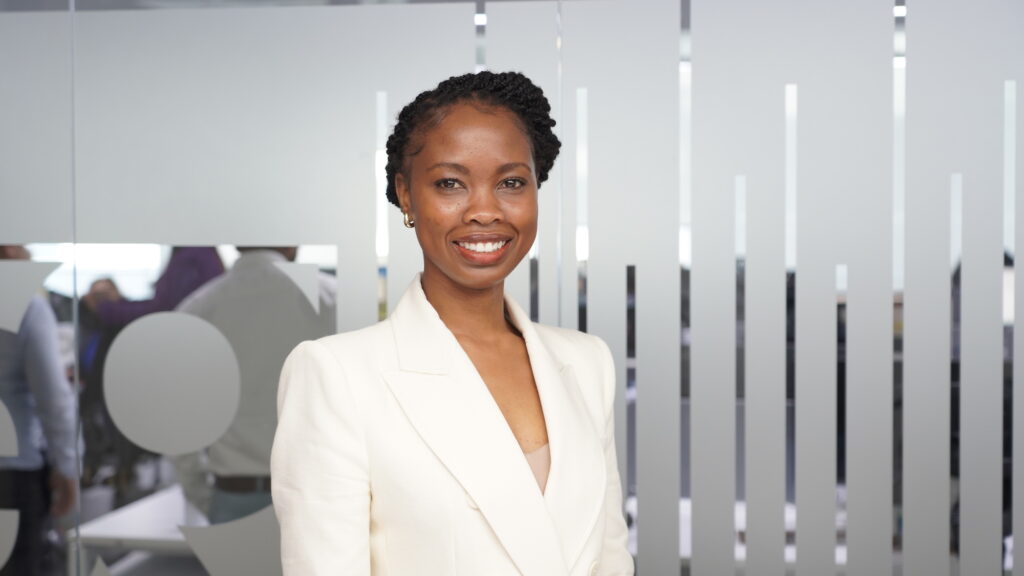
Engineering Journey & Professional Expertise
Tell us a bit about your journey—what inspired you to pursue a career in engineering, and how has your path evolved over the years?
My engineering journey began in South Africa, where I completed my Mechanical Engineering degree at the University of Johannesburg. Like many aspiring engineers, I was drawn to the field with a sense of idealism. I envisioned myself solving large-scale energy challenges across the African continent, developing futuristic technologies, and working in dynamic environments far removed from the conventional desk job. While the reality of engineering proved to be more complex—filled with spreadsheets, design software, and stringent technical standards—I quickly came to appreciate the discipline for what it truly is: a platform for meaningful impact and problem-solving at scale.
Once I stepped into the profession, I found myself captivated by the intricate challenges and the ability to translate theoretical knowledge into tangible outcomes. Since then, I’ve had the privilege of working across Sub-Saharan Africa, the Middle East, and Europe, contributing to diverse projects ranging from high-rise towers and residential developments to hospitals, educational campuses, and corporate fit-outs.
With each new role and region, I’ve progressed in both technical expertise and leadership. From Engineering-in-Training to Principal Engineer, I’ve led multidisciplinary teams, taken on complex coordination roles, and played a part in shaping strategic design outcomes. What continues to inspire me is the evolving nature of engineering—be it designing more energy-efficient HVAC systems, embracing digital transformation, or mentoring the next generation of professionals. This profession has offered me a deeply fulfilling journey, and I look forward to what lies ahead.
Are there any standout projects or milestones that have significantly shaped your career to date?
Absolutely—several projects have not only challenged me technically but also shaped my professional identity.
One of the earliest and most formative was the Hirt & Carter Cornubia Facility in South Africa—a 50,000 m² advanced industrial printing complex. It was here that I gained first-hand experience in designing critical building services systems under demanding operational parameters. The HVAC system was central to achieving commercial viability, requiring tailored engineering solutions that balanced performance with energy efficiency.
Another defining moment came with my involvement in the Misk Schools campus in Riyadh, Saudi Arabia. This 110,000 m² educational development comprises nine schools and is certified LEED Gold. This project was a masterclass in cross-border collaboration and sustainable design. It demanded not only technical excellence but also a strong alignment with architectural intent and cultural sensitivity—an experience that significantly broadened my approach to integrated building services.
Most recently, I’ve played a key role in Ireland’s Schools Energy Retrofit Pathfinder Project—an ambitious government-led programme to upgrade the energy performance of public school infrastructure. As the lead for six schools in the programme, I was deeply involved in delivering costed design packages and contributing to national carbon reduction goals. This initiative showed me how engineering can serve public good on a systemic level.
On a personal level, becoming a Chartered Engineer with Engineers Ireland in 2023 and attaining Professional Engineer status from South Africa’s Engineering Council in 2022 were proud milestones that validated years of professional commitment and continuous learning.
The Middle East is home to some of the world’s most ambitious engineering projects. What draws you to this region professionally, and what excites you most about working here?
The Middle East presents an extraordinary convergence of ambition, innovation, and technical opportunity—qualities that naturally attract any forward-looking engineer. What sets the region apart is not only the scale of its vision but also its willingness to break conventional boundaries in pursuit of iconic urban and infrastructural transformation.
Take, for example, the Museum of the Future in Dubai—a project that epitomises engineering and architectural audacity. The complexity of its toroidal form, adorned with Arabic calligraphy, embodies the essence of what I find most exciting about the region: the fearless pursuit of beauty and function, grounded in cultural significance and delivered with technical precision.
Having worked in various global regions, I’ve witnessed the critical role engineering plays in shaping societies and economic development. In the Middle East, the transformation is palpable. From desert landscapes emerge entire cities and coastal developments like the Palm Jumeirah, demonstrating what’s possible when multidisciplinary teams are empowered by vision and resources.
What excites me most about working here is the chance to contribute to this momentum—to be part of teams that are pushing boundaries in sustainability, digital design, and innovative engineering. The Misk Schools project was a prime example of this ethos, and I look forward to continuing such meaningful work, particularly through my role with 9E Global.
Joining 9E Global & Industry Impact
What motivated you to join 9E Global, and how do you see your role contributing to the company’s growth in the region?
When the opportunity to join 9E Global arose, I was immediately drawn to the company’s commitment to technical innovation and its bold aspirations for regional growth. Throughout my career, I’ve actively sought roles that not only challenge me but also align with a clear purpose. In this case, 9E Global’s vision to push engineering boundaries while delivering exceptional value to clients deeply resonated with my own professional ethos.
There were two defining aspects that motivated me most. Firstly, the company’s focus on innovation—its drive to go beyond traditional design solutions and explore new paradigms in engineering. Having worked on complex, high-profile projects throughout my career, I’ve always thrived in environments that reward creativity and systems thinking. 9E Global fosters that spirit and provides the resources and scale to execute cutting-edge solutions.
Secondly, I was impressed by 9E Global’s engagement within the industry itself. I came across the company’s presence at the MEP Middle East Conference 2024, and I appreciated how it positions itself as a thought leader. This level of industry involvement suggests a forward-thinking organisation, not only interested in delivering projects but also shaping the discourse around engineering’s future.
In terms of my contribution, I bring global experience across three continents, deep technical expertise in building services, and a collaborative leadership style. I hope to leverage this background to lead multi-disciplinary teams, deliver complex projects, and strengthen our presence in strategic sectors—especially as we expand our healthcare and education portfolios.
How does 9E Global align with your professional ambitions and expertise?
Beyond technical alignment, what struck me about 9E Global was its holistic perspective on engineering. The company recognises that our work goes beyond buildings and systems—we create environments that enhance lives, foster innovation, and enable sustainable growth. This perspective resonates strongly with me.
Throughout my career, I’ve also invested in philanthropic and mentoring initiatives, and I was pleasantly surprised by 9E Global’s interest in those aspects of my professional life. That cultural awareness—valuing both what you do and why you do it—makes 9E Global an ideal environment for professionals who want to grow while making a broader impact.
What are some of the most exciting projects or challenges you anticipate working on in your new role?
I’m currently gearing up to lead the engineering delivery for the Iconic (Star) Tower project in Baku—set to become the tallest residential tower in Azerbaijan. It’s an ambitious development and a landmark for the region. The site itself poses a unique set of challenges, being constructed on reclaimed land. We’ll need to develop bespoke engineering strategies that consider everything from geotechnical stability to energy resilience.
It’s the kind of project that offers both complexity and prestige—exactly where I believe I can add value. I’m looking forward to applying advanced engineering practices and leading our teams through what promises to be a technically demanding but highly rewarding journey.
Engineering Challenges & Regional Trends
From your perspective, what are some of the most pressing challenges facing engineers in the Middle East today?
While many challenges are global in nature, one that stands out particularly in the Middle East is the rapid pace of technological advancement and digital transformation. With smart cities, AI-driven design tools, digital twins, and data-centric construction becoming the norm, engineering professionals are under increasing pressure to adapt quickly.
Unfortunately, as a profession, we have historically lagged in adopting digital innovation compared to other industries like finance, media, or telecommunications. The risk here is that we may fall behind in relevance if we don’t proactively integrate these tools into both our processes and mindsets.
The Middle East, however, offers a unique opportunity to lead. With government-backed visions and ambitious investment in infrastructure and smart technology, the region is well-positioned to set new global benchmarks. But this requires a commitment to upskilling, innovation, and embracing new models of delivery—from digital design workflows to AI-enhanced sustainability planning.
Additionally, engineering must become more attractive to the next generation. We must show young engineers that this field is as exciting, digitally fluent, and socially impactful as any other modern profession.
A Personal Perspective on Engineering
What advice would you give to young engineers looking to build a career in the Middle East?
Stay curious.

